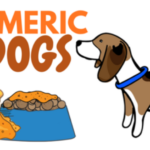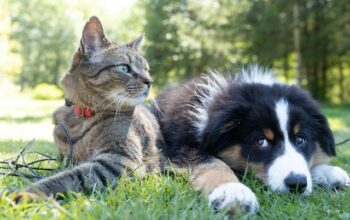Your furry friend needs proper nutrition to stay healthy and happy. However, figuring out what is good for your pet and what is not can be difficult.
This is why it is important to understand the ingredients on a pet food label and how to interpret them. The Association of American Feed Control Officials (AAFCO) sets guidelines for how to read a food label.
Protein
Protein is a vital component of your pet’s diet, and a good quality protein source can help keep your dog or cat healthy for years to come so do look for Best probiotics for cats for your pet. It plays a variety of important roles in the body, including maintaining muscle, fur, skin, and nails; making essential components of the immune system; and forming enzymes that catalyze chemical reactions in cells.
Animal-based proteins have long been the go-to protein sources for pet food formulators, but new alternatives are also being introduced to the market. Some are designed to complement animal-based ingredients, while others support a more environmentally conscious approach.
Plant-based ingredients like ancient grains (quinoa and chia seed) and legumes (peas, lentils, soybeans, and various common beans) are recognized for their amino acid content and phytonutrients considered beneficial to your pet’s health. Incorporating a combination of plant and animal protein sources can minimize the environmental burden while ensuring your pet gets the nutrients they need to thrive.
Novel proteins are alternatives to conventional chicken, beef, and pork that have been widely used in dog and cat foods. These include venison, bison, buffalo, wild boar, crocodile, alligator, kangaroo, elk, ostrich, rabbit, pheasant, quail, and goat – basically, any meat not traditionally used to feed pets in the past.
Non-traditional proteins are being developed for a number of reasons, from humanization and functional nutrition to sustainability. The goal is to provide a broader range of ingredients to the pet food marketplace and help promote healthier options for dogs and cats.
A pet’s protein needs can vary significantly depending on age, activity level, and size. Growing puppies and kittens require more protein than adult pets, while seniors may need less.
The amount of protein in a pet food can confuse many consumers, so manufacturers are trying to simplify the label to make it easier for pet owners to determine which foods are best for their pets. They highlight the protein percentage in each food and put the information in easy-to-read terms.
While the number of protein sources on a label is important, it is even more so to understand how and where those ingredients come from. It is common to see several cheap vegetable- and grain-sourced proteins listed early on, but these will not deliver all the digestible protein your pet needs.
Carbohydrates
Carbohydrates are one of the three categories of macronutrients alongside protein and fat that are present in a pet’s diet, and they are key to proper dog and cat care. They can be found in different forms, including sugars, starches, and dietary fibers.
The main function of carbohydrates is to provide energy to the animal for an extended period of time. This helps the body function normally between meals and is also why they are considered important in a balanced diet.
In addition to providing energy, carbohydrates can help to support other nutrients in the body. A balanced diet should include a variety of carbohydrates from different sources to ensure the body gets the required amounts of all the essential nutrients it needs.
For example, carbs can help to maintain a healthy calcium-phosphorus ratio, which is important for supporting the health of bones and muscles. They can also be beneficial for pregnant and lactating dogs.
Dogs can also benefit from eating a diet with complex carbohydrates that contain dietary fiber, as these contribute to bowel health and regulate the pH within the colon. They also promote regular bowel movements and encourage the growth of good bacteria.
As a result, they can contribute to overall health and prevent obesity and bowel disease. The dietary fiber in carbohydrates is indigestible, but the gut microbiome uses it to ferment and produce short-chain fatty acids that are an energy source for the cells lining the gastrointestinal tract.
Various grains are used as carbohydrates in pet foods, and each has a specific role to play in the diet. For example, whole grain cereal grains such as rice are easy for dogs to digest and can help support overall digestive health.
Likewise, husked whole grains like wheat and oats are high in quality carbs that can help keep the body functioning properly. They also provide essential nutrients like vitamins, minerals, and amino acids for your pet’s digestion.
A wide range of carbohydrates is used in pet food and treats, including corn, potatoes, and other tubers. The carbohydrates in these ingredients can benefit your pet’s overall health and well-being, as they are a source of glucose that is easily absorbed by the body.
Fats
Fats are an important part of your pet’s diet, helping them absorb vitamins and other required nutrients to thrive. They also provide energy and support healthy skin, coats, and overall health. However, feeding your dog a diet that is too high in fat can lead to obesity and other health issues such as heart disease and liver disease.
Keeping fats in a balanced amount and ratio is essential as this helps ensure a healthy body, mind, and mood. The type of fat that your pet needs will vary depending on their age, breed, and activity level.
Generally, there are three main types of fats: unsaturated fats, saturated fats, and trans fats. Unsaturated fats are found in plant and seed products, while saturated fats are found in animal-based foods such as meat, dairy, and eggs.
A balanced diet should provide your pet with the correct amounts of fats and fatty acids for their size, age, and activity level. These fats and fatty acids include omega-3 and omega-6 fatty acids, which are known for their beneficial effects on your pet’s health.
Some of the most common sources of these fatty acids are fish oil, which contains omega-3 fatty acids, chicken fat, which contains a mixture of triglycerides and arachidonic acid, and soybean, sunflower, and corn oils, which are primary sources of omega-6 fatty acids.
The fatty acids in these oils help your pet absorb fat-soluble vitamins, such as Vitamins A, D, E, and K. They can also contribute to a healthy and shiny coat and promote immune function.
As a general rule, animal sources such as chicken or beef fat are higher in triglycerides and fatty acids than vegetable oils. Other fat sources may also be used to help balance the fat content of a diet.
Many brands use a combination of different ingredients to ensure your dog’s food provides the right amounts of fat and ratio of essential fatty acids for their age, weight, and activity level. This can include fish and fish oil, animal fats, vegetable oils such as corn and soybean, or a supplement.
Vitamins & Minerals
Vitamins and minerals are a crucial part of your dog’s diet. They are needed to support the body’s natural functions, such as a healthy immune system and strong bones.
They also help your pet’s body function properly and are essential for healthy skin, coats, and eyes. Supplements can provide your dog with all the essential vitamins and minerals they need for optimal health.
All pets need a variety of vitamins and minerals in their diets. Some are synthesized from the raw materials in your pet’s food, and others are derived from supplements.
It is important to remember that a balanced and nutritious diet will include all the vitamins and minerals your pet needs to thrive. The best way to do this is to rely on whole foods and add a small amount of supplemental ingredients if necessary.
Generally, pet foods will contain a pre-mixed blend of vitamins and minerals. This is done to ensure that the micronutrients are mixed correctly in the pet food factory and are not lost during processing.
The most common vitamins your pet will need in their diet are thiamine (B1), riboflavin (B2), niacin, B12, choline, and vitamins A, D, and E. These vitamins are crucial for the cellular machinery to break down protein, fat, and carbohydrates in your pet’s diet.
These vitamins are also known as antioxidants, which can fight free radicals in the body that lead to inflammation and oxidative stress. They also promote cell growth and support immune system function.
Your dog will need other vitamins in their diet: folic acid, iodine, and selenium. Folic acid helps the body make red blood cells and maintain healthy eyesight, iodine supports thyroid hormone production, and selenium supports the immune system.
It is also crucial to consider your pet’s age when deciding which vitamins and minerals to add to their diet. Puppies and kittens require increased amounts of Vitamin D to aid in calcium and phosphorus absorption during early development, and senior pets can benefit from the antioxidant effects of Vitamins E and C.
Related Posts












